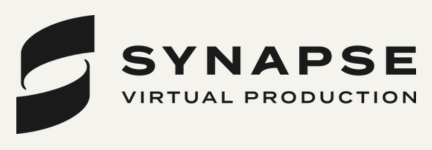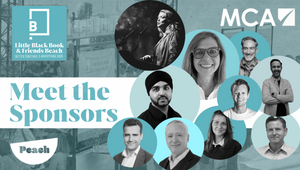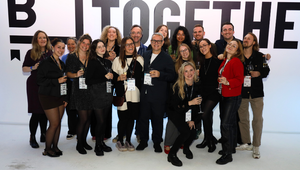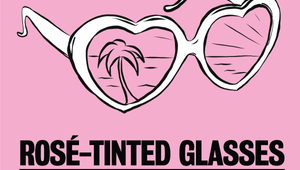
Where Design Meets Delivery: Building the Honeycomb Brand

Disrupting the advertising delivery landscape in more ways than one, Honeycomb have put creativity at the forefront of their user experience with the help of their Head of Design, Andrew Fox.
Here Andrew talks about the Honeycomb user-experience, breaking the internet, and how Beyonce helped with their branding.
Q> How did you
first hear about Honeycomb?
AF> Chris Young, CTO at Honeycomb,
is an old friend of mine and we have always found the tension between design
and technology fascinating. He said he was involved in this “new thing” and
thought I would find it interesting mainly because they were starting from
scratch.
I didn't even know what advertising
delivery was when I started speaking to the team, but I loved the attitude at
Honeycomb and knew this was a company incredibly rich in possibilities. The
fantastic team was a big draw too: a mix of talented tech people together with
incredible experience in the field. The potential growth, looking ahead towards
a programmatic future means it could go in a million different directions, and
so it made for a very exciting proposition.
Q> Why did they want a designer on board?
AF> They had been building the
product for nearly two years when I joined and had already started using it
within Sky, but they knew there was a big design shaped hole. They needed
someone who could tie together user experience and branding.
From a UX angle, after some initial
user testing we realised it was already easier to use than other market
offerings, which made my life easier, but I was asked to take a fresh look at
the whole thing. With the fundamentals in good shape I’ve focused on looking
at making the journeys even smoother, listening to users and working to
understand where we go next. As we expand and move to other countries it
becomes more of a challenge to ensure the user experience is just as smooth,
but that’s part of my job – and I find it fun to be constantly improving and evolving
the product.
The other side of my role is
ownership of the brand. There was some initial brand design work at Honeycomb,
but it felt too corporate. It didn’t feel right for how different and
disruptive the product and thinking was — nor did it reflect the team.

Q> Did the team understand the
direction you wanted to take the brand?
AF> Completely. The founders
Richard Carter and James Carpenter understood the design direction from the
start. They have a lot of experience – James even studied design, so he
appreciates smart design and great advertising. Putting design at the heart of
Honeycomb is something everyone understood.
Of course, Honeycomb isn’t the first
company to think of brand identity in this way, putting design at the very
forefront, but it is still sadly unusual for a B2B organisation to place such
focus on it.
Q> How did the Honeycomb brand and messaging come together?
AF> We needed clear strategy and
great design, so I called on two experts I had worked with before to come in
and help us. Leslie Mello (ex-Wolff Olins) led the strategy, and Darren Perry
worked on our design.
It’s important for the brand to
reflect the people and the spirit of the company so that it feels real. Having
talked to our customers, and with the history of many of the team, we wanted it
to feel like part of the creative advertising world. We wanted to celebrate it
— not just to feel like an admin tool.
We wanted it to be exciting, fun, and
bold. We even agreed it should have the character of someone you’d go for a
pint with – and not many brands can achieve that. Of course, we drew influence
from other companies that have creative flair, mainly B2C, and we pushed
against the more utilitarian brands that while valued, aren’t as relatable.
We ended up throwing the word
‘fierce’ around a lot, but in the Beyoncé sense — not in an aggressive way. I
like to think of her as a model of the brand. Really.
And of course, once we got to grips with balancing that all out, we knew we had to convey our experience. After all, we have the collective knowledge of some of the biggest names in advertising delivery.
Q> So what are the main
characteristics of Honeycomb?
AF> We’re curious, agile, open, inclusive, human, hungry for better. Ultimately we’re better together. As clichéd as that might sound, it is important that people know we are not top-down like so many other businesses.
We are responsive to our users. We are constantly working to improve our clients’ lives. We are always tweaking and updating our technology and design, so everything works better, and ads are delivered more securely and reliably. It makes for a nice marriage between my user experience and my brand brain!

Q> I’m sure it’s hard to imagine
life before Honeycomb – but what did that look like?
AF> Yeah, I’ve been here less than
a year, but we’re moving so fast it feels like I’ve been here ages.
So, taking you right back, I studied
fine art at university at a time when the web was just starting (the early
nineties), so I was lucky enough to be involved in digital design from very
early on.
It was an exciting time and at my
first job, a colleague and I built up the web aspect of a traditional agency
until it evolved into a successful web design company. I then became an
independent designer and worked with a wide range of companies.
Working with brand consultants Wolff
Olins was a hugely influential move for me; they were revolutionary, and I got
to work with some incredible people. Back then ‘user experience’ as a
discipline didn’t exist. But as part of the digital team there, I was able to
push the idea that ‘how’ company services worked online was going have a
fundamental impact on the brand. This is now a well-understood concept, but at
the time most people in the design world struggled to take this on board. They
wanted to work on great imagery and copy, but not truly think about how people
would interact with it online and in the world.
After Wolff Olins, I ran my own agency for a while before joining service design agency LiveWork where user experience goes beyond just digital. Before Honeycomb I was Head of Design at Findmypast — and now here I am!
Q> Looking forward – what is the
scope of your role as Honeycomb grows?
AF> I’m here to make sure we don’t lose the spirit of the brand. I have been involved in many projects where whatever the best intentions when the brand launches, further down the line the vision has diffused. At Honeycomb the whole team values the importance of evolving the experience to meet client need, adapting to be the best that we can be, and working together to a common goal of creating zero-waste advertising.
Q> And finally tell us one thing
that might surprise us about Honeycomb?
AF> It’s the overall ambition for the company that I think will eventually surprise everyone. Our virtual reality time travel live streaming team will break the internet. But don’t tell anyone about that.













